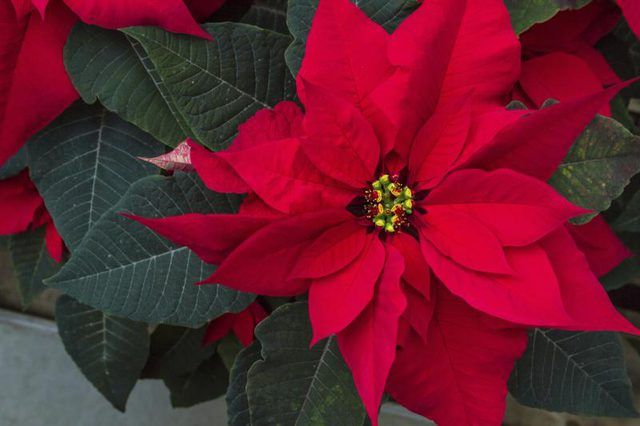Bulbs
Flower Basics
Flower Beds & Specialty Gardens
Flower Garden
Garden Furniture
Garden Gnomes
Garden Seeds
Garden Sheds
Garden Statues
Garden Tools & Supplies
Gardening Basics
Green & Organic
Groundcovers & Vines
Growing Annuals
Growing Basil
Growing Beans
Growing Berries
Growing Blueberries
Growing Cactus
Growing Corn
Growing Cotton
Growing Edibles
Growing Flowers
Growing Garlic
Growing Grapes
Growing Grass
Growing Herbs
Growing Jasmine
Growing Mint
Growing Mushrooms
Orchids
Growing Peanuts
Growing Perennials
Growing Plants
Growing Rosemary
Growing Roses
Growing Strawberries
Growing Sunflowers
Growing Thyme
Growing Tomatoes
Growing Tulips
Growing Vegetables
Herb Basics
Herb Garden
Indoor Growing
Landscaping Basics
Landscaping Patios
Landscaping Plants
Landscaping Shrubs
Landscaping Trees
Landscaping Walks & Pathways
Lawn Basics
Lawn Maintenance
Lawn Mowers
Lawn Ornaments
Lawn Planting
Lawn Tools
Outdoor Growing
Overall Landscape Planning
Pests, Weeds & Problems
Plant Basics
Rock Garden
Rose Garden
Shrubs
Soil
Specialty Gardens
Trees
Vegetable Garden
Yard Maintenance
How to Make a Poinsettia's Leaves Turn Red
How to Make a Poinsettia's Leaves Turn Red. A poinsettia (Euphorbia pulcherrima) turns red in response to the short days and long nights of late fall and winter. The red coloring occurs in bracts, which are modified leaves surrounding the plant's tiny flowers. Keeping a poinsettia alive from one holiday season to the next and prompting its bracts...

A poinsettia (Euphorbia pulcherrima) turns red in response to the short days and long nights of late fall and winter. The red coloring occurs in bracts, which are modified leaves surrounding the plant's tiny flowers. Keeping a poinsettia alive from one holiday season to the next and prompting its bracts to change color is challenging, but it can be done without special equipment. Usually an indoor plant, poinsettia is hardy outdoors all year in U.S. Department of Agriculture plant hardiness zones 9 through 11.
Pruning a Poinsettia
Pruning a poinsettia removes its faded bracts, making room for next year's colorful show, and maintains its compact, dense shape. Poinsettia is naturally lanky and needs regular pruning through spring and summer to grow into what is considered a pleasing form. Before and after pruning a poinsettia, sterilize pruning shear blades by wiping them with a cloth that was dipped in rubbing alcohol. When the bracts turn muddy green in spring, prune all the stems to 3 to 6 inches above the plant's soil, making each cut just above a leaf. When new shoots grow 3 to 4 inches long, use your fingers to pinch off the top 1 inch of each stem, leaving four or five leaves. A gentle shower of water from a watering can will rinse off the white sap that oozes from the stem ends. Contact with the sap can cause an allergic reaction in some people, particularly those allergic to latex. Pinch off the stem ends when they grow to 3 to 4 inches long again, but stop pinching stems at the end of summer.
Transplanting to a Larger Pot
If the poinsettia's roots are growing through the base of its container after it finishes flowering, then it needs a slightly larger pot. A poinsettia usually begins to outgrow its pot in spring and needs more space to grow healthily during spring and summer. After pruning the faded bracts from a poinsettia, transplant it into a pot one size larger, ensuring that pot has bottom drainage holes. Mix 1 tablespoon of 0-46-0 fertilizer with 1 gallon of a well-draining, commercial potting soil, such as a mixture that is 50 percent sphagnum peat moss and 50 percent vermiculite or perlite. Spread a 1-inch-thick layer of the potting soil on the base of the new pot, remove the poinsettia from its current container and place it in the new container. The soil surface around the poinsettia should be about 1 inch below the new pot's rim after you add potting soil. Fill gaps with more potting soil, and water the soil thoroughly.
Restricting Light
Prompting a poinsettia's bracts to change color in time for the late-year holiday season requires restricting its light beginning in early fall. In a warm climate, the poinsettia can spend summer outdoors in a warm spot sheltered from wind, but it must be taken indoors by Oct. 1 for its bracts to change color. From early to mid-fall onward, keep the plant in a dark room or under a lightproof box for 14 hours in a row each day, and expose it to six to eight hours of bright sunlight every day. A small break in that routine can prevent the bracts from changing color.
Controlling Temperature
Poinsettia is sensitive to cold temperatures and requires steady warmth to encourage its color change. Exposure to temperatures below 50 degrees Fahrenheit causes leaf drop, and freezing temperatures kill the plant. While keeping a poinsettia under controlled light conditions to change its color during fall, also keep the plant at a nighttime temperature between 60 and 70 degrees Fahrenheit. Water and fertilize the plant as normal. In eight to 10 weeks, the poinsettia's bracts should turn red.